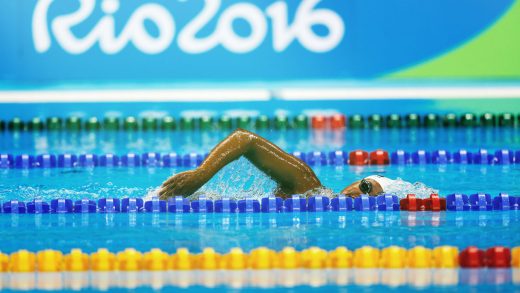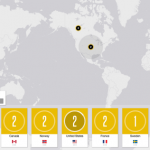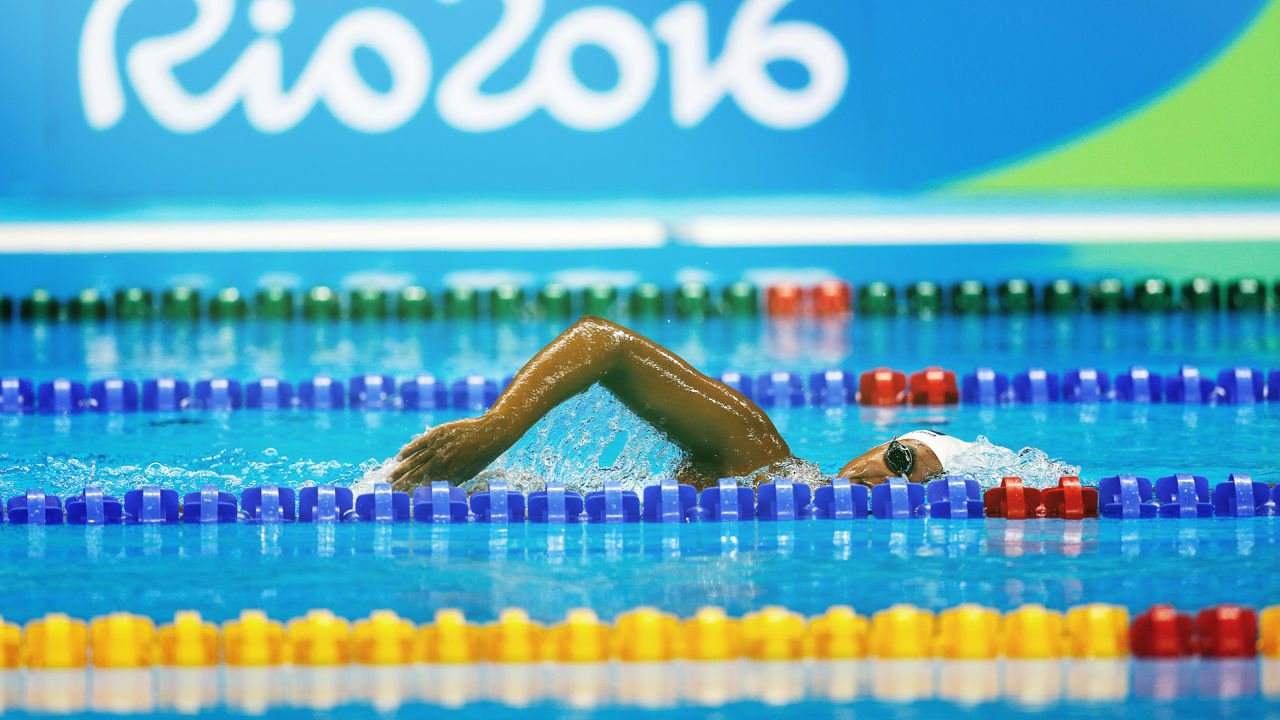Olympic Athletes Struggle Financially While Striving For Gold
Samantha Achterberg is often worried about losing her home. With an income of roughly $8,000 per year, mostly through donations and gifts, the prospect of finding a new apartment and moving is a legitimate concern. For perspective, that’s well below the poverty level of $11,880, according to 2016 U.S. federal income guidelines.
But Achterberg’s isn’t a typical hardship story. She’s the reserve athlete for the U.S.A. Modern Pentathlon 2016 Olympic Team.
As the 2016 Summer Olympics kick into gear, as many as 5 billion people worldwide will watch the world’s top athletes compete at the games in Rio de Janeiro. But underneath the pageantry and athleticism is a stark reality. For many elite U.S. athletes like Achtenberg, pursuing their sport is an expensive, full-time proposition that leaves them in precarious, or even dire, financial situations.
“Each year our spots are reviewed, so every year you’re at that point, ‘Oh, gosh. Am I going to be able to keep my room? Is our sport going to still get enough money?’” says Achterberg. She says her roommate recently had to move out of the Olympic Training Center in Colorado Springs, Colorado, because she didn’t make the Olympic team.
Last year, less than 35% of her travel, competition, and other expenses were covered by Achterberg’s federation, and she receives no stipend from her sport’s governing body or the U.S. Olympic Committee (USOC). The yearly cost for travel and competition expenses can be up to $23,000, depending on the events in which she participates.
Paying To Play
“There’s really no being a part-time Olympian anymore,” says Edward G. Williams, a principal attorney with New York City law firm Stewart Occhipinti, LLP, and athlete advocate. Williams is also a former Olympian who competed in the biathalon event in the 1968 Winter Olympics. He says today’s athletes are expected to train year-round for their sports. Because most are young, they often don’t have savings and are limited in the jobs they can take because of rigorous training schedules and the time off needed to compete to maintain their status.
Those who hope to land college scholarships also need to be mindful of the National Collegiate Athletic Association (NCAA) rules about accepting money related to their sport, which can make them ineligible. But even full-ride scholarship athletes don’t have it easy. A 2011 report by the National College Players Association and Drexel University found that the room and board provisions in a full scholarship at Football Bowl Subdivision (FBS) leave 85% of players living on campus and 86% of players living off campus living below the federal poverty line.
Williams takes issue with the lack of support for up-and-coming Olympic athletes. The USOC is one of the few national committees that doesn’t receive funding from its government. Williams says that the national governing bodies (NGBs) aren’t consistent in their financial support when athletes reach a high level. Depending on the sport, athletes may receive housing at one of the Olympic training centers and a small stipend. Some NGBs of less popular sports such as badminton are unable to attract corporate sponsors or provide much financial assistance, Williams says.
A Bigger Hurdle For Paralympians
For Paralympians, the challenges can be even greater. Amy Dixon is an elite para-triathlete and member of the U.S.A. Paratriathlon National Team. A former sommelier, she was declared legally blind in 2007 as a result of an autoimmune disease and has had 19 eye surgeries over the past six years.
For Dixon to compete, she needs to incur all of the expenses of other athletes, but also pay for a guide who races with her and helps her navigate the course. She estimates that her living and training expenses run at about $4,000 per month, not including major equipment—no small feat on her Social Security disability benefit and a stipend of less than $6,000 per year for being on the national team.
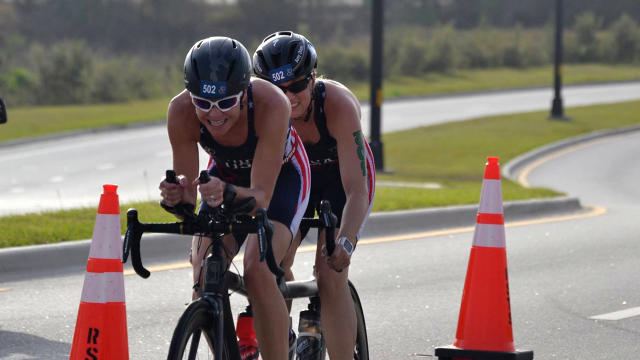
Dixon’s bike cost more than $20,000, which she funded through piecemeal donations made from friends and family through the United States Association of Blind Athletes. She’s currently trying to find a way to pay for her family to watch her compete in Rio.
“If you want your family to come down and see you compete on the biggest day of your life, you have to either be able to afford it or find a way to pay for it,” she says.
Making It Work
Elite athletes determined to make it work are using a combination of existing resources and technology. Friends and family often help out, and it’s not unusual to see crowdfunding campaigns for Olympians. GoFundMe recently held a crowdfunding competition for Rio-bound athletes that raised almost $750,000 from more than 140 campaigns and 7,500 donors.
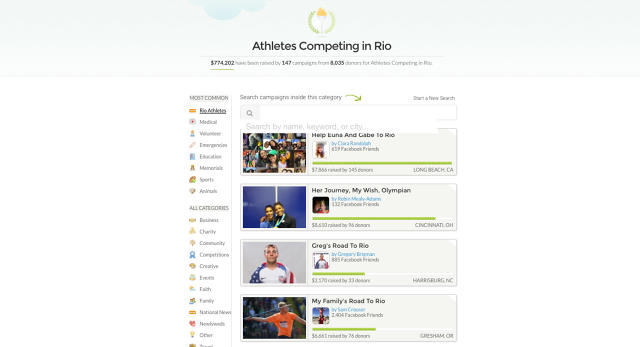
The USOC offers training facilities, room and board, basic medical care, and other resources to some of its highest-level athletes, as well as some employment opportunities. The committee has also partnered with staffing firm Adecco to help athletes find flexible work arrangements that will allow athletes to take the time off they need to compete.
Stephen Lambdin, who is representing Team U.S.A. in Taekwondo at the games in Rio, landed part-time, then full-time employment with GE Transportation through the USOC Athlete Career Program. Lambdin was paid $60,000 over that time, which helped with his $100,000 in annual training and competition expenses. After the Rio games, he plans on going to law school.
Lambdin says discipline and frugal living are important parts of juggling the money coming in against his expenses. His pre-Rio routine typically started at 3:30 a.m. with weightlifting, then he worked until 5:30 p.m. and headed to training after that. “Vegetables, ground beef, and a sweet potato were pretty much three out of four meals a day,” he says.
Some nonprofits offer assistance, as well. The U.S. Athletic Trust is a nonprofit organization that has a funding program for Olympic hopefuls who hold a college degree and show evidence of being able to compete at the highest level in their sport. Varying levels of assistance, grants, and other support may also be available through NGBs or sport-specific clubs like USA Track & Field, for example.
Some athletes land corporate, or other, sponsorships. Alysia Montaño, who ran the 800-meter race in the 2012 Olympics, landed a sponsorship for an undisclosed amount. But she says that big-dollar sponsorships may come with clauses that reduce the amount if the athlete doesn’t perform or gets injured, so it’s no guarantee.
Other athletes, like Dixon and Achterberg, may get sponsorships in the form of in-kind donations, but not cash. Like most areas, technology has facilitated the process of finding sponsorships. Open Sponsorship is a website that connects athletes and sponsors directly.
When being an athlete is your full-time job, funding the endeavor isn’t an easy task. It often takes a patchwork of sources to pool enough funds for athletes to reach the greatest and most well-known competition stage in the world.
Fast Company , Read Full Story
(28)

